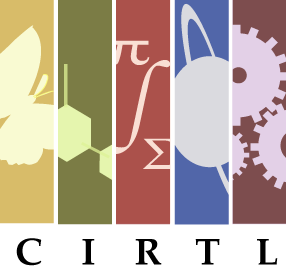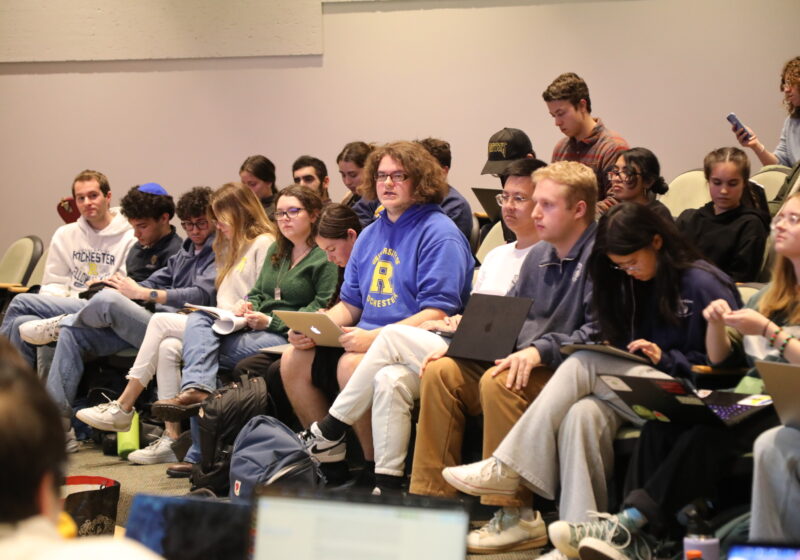
Courtesy of teachingcenter.wustl.edu
On Tuesday, April 3, UR released a statement informing the community that the University has joined the Center for the Integration of Research, Teaching & Learning (CIRTL) — which the National Science Foundation supports — in an effort to better prepare science and engineering faculty to inform this generation of college-level science, technology, engineering and math (STEM) students.
CIRTL is based at the University of Wisconsin – Madison and was founded in 2003, but has since grown to include 25 of the nation’s top-tier universities, such as Vanderbilt, Northwestern, Cornell and now UR.
The current crux of the problem in college-level science education, as CIRTL has identified it, comes from the trajectory of graduate students moving from research positions into formal teaching positions with little to no actual teaching experience in between.
“There is no question that teaching in many departments is secondary to research,” UR Biology Professor David Goldfarb said.
While Goldfarb lauded the benefits of having successful researchers leading the next generation of scientists, he cautioned that their success as researchers should not come at the cost of students’ education.
“Good teachers are rarely rewarded by the administration — at least nowhere near as much as successful researchers,” Goldfarb said. “[Even though] one of the best things about UR and other top research institutions is that students are taught by professors who are leaders in the fields they teach.”
CIRTL helps address the issue of faculty preparedness by encouraging increased collaboration and integration among STEM departments within individual universities and among the CIRTL member universities altogether.
“Both new and seasoned faculty often teach their classes without considering how their course material fits into the mission of their department or college,” Goldfarb said.
Another goal that CIRTL has is to prepare faculty to learn how to teach to an increasingly diverse amalgamation of students, ranging from students of racial diversity to students with diversity of academic backgrounds.
“Efforts to improve the diversity of the scientific workforce are essential,” Professor of Chemistry James Farrar said. “I believe undergraduate and graduate programs [in the U.S.] are still ‘the envy of the world,’ but we are losing ground.”
Not all of the deficiencies at the teaching level are entirely due to a lack of experienced faculty entering the field. In part, the shortcomings are due to the increasing external pressures facing the faculty of research universities in the wake of the recession, often times forcing their focus away from teaching.
“In times of decreasing research funding, many faculty are working much, much harder than in the past to obtain and maintain research funding,” UR chair of the Brain and Cognitive Sciences Department Greg DeAngelis said. “Moreover, research funding is critical to the overall budget of the university. So there are many pressures on faculty.”
DeAngelis was hopeful, however, that joining CIRTL could help alleviate some of these pressures and even help those professors with teaching experience to refocus on their students as well.
“Programs like the one proposed here can only help faculty by giving them a structured forum to improve their teaching while helping them to balance their other duties efficiently,” he said.
Through CIRTL, the faculty of STEM departments at UR will not only have opportunities to communicate with other member universities about teaching methods, but UR will also be able to share some of its own accomplishments. Chief among these effective models are peer-led workshops, online homework interfaces and successful inclusion of a diverse range of students in STEM programs.
“I agree that the peer-lead workshop model is an outstanding program here at UR and has affected the way I teach,” Goldfarb said. “The training that goes along with running workshops has transformed my appreciation for knowing something about how students learn.”
Professor of Brain and Cognitive Sciences Duje Tadin feels that there are two levels to the current problem in STEM teaching.
“We’re [joining CIRTL] right now because of the way that science education is,” he said. “The bigger problem is that people don’t get as much teaching experience coming in as faculty, but [UR] can’t deal with how people are prepared before they’re here so it’s important that we can deal with how they’re integrated once they’re taken on.”
By many indications, this is not just a problem that UR needs to address — STEM departments across the nation are facing many obstacles, including retaining students majoring in their programs.
According to Anna Kuchment, a senior editor for Scientific American who also blogs about science education for the magazine, “studies have found that as many as 40 percent of science and engineering majors either switch courses of study to a non-STEM field or fail to get a degree altogether.
“There are many reasons behind this phenomenon, but improving the way these subjects are taught, especially at the introductory level, may be one way of keeping students engaged,” she said in an interview with the Campus Times.
As with any large-scale problem, broad support for the solution is necessary to have an impact.
“[CIRTL’s] goals are even more likely to succeed because you see such a big group of fairly distinguished universities backing them,” Tadin said. “It’s easier to affect change as part of a group than as an individual university with its own initiative.”
Sklar is a member of the class of 2014.


